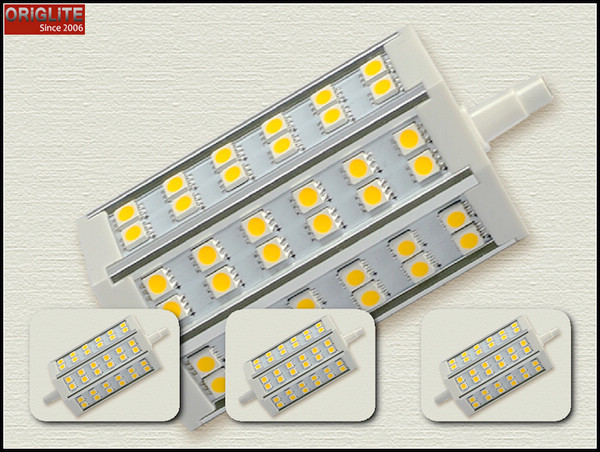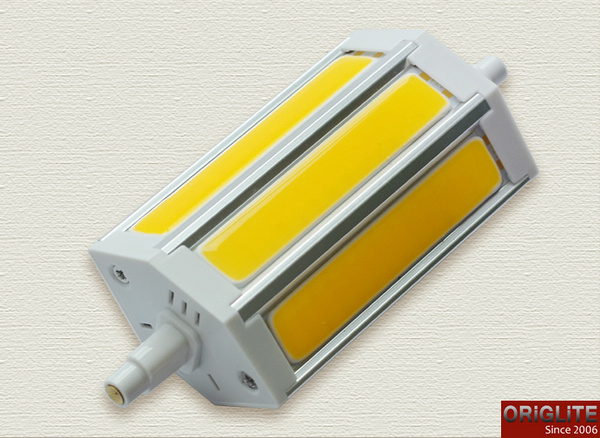There are now many generalpurpose consumer LED R7s lamp that give off good light. With so many, how can you tell the difference?
After years of work, LED lighting company have finally achieved their goal of producing a good replacement for the common 100-watt halogen R7s lamp.
Origlite earlier this week released a R7s lamp that mimics the light and shape of the conventional R7s lamp with aggressive pricing,
ranging from just $5.23 for a 5-watt equivalent to just under $10.60 for a 15- watt equivalent. See,
http://www.origlite.com/Product.asp?BigClassName=Residential and Commercial Lights&Smallclassname=LED R7s Light
With inefficient traditional R7s lamp being phased out, there are a lot of applications.

For the consumer, the main benefits of LED fixtures are clear: they’re energy efficient, can last for more than 20 years and, in many cases,
give off good light. The prices have gone down steadily as well as the LED components have dropped in price and lighting companies
introduce better designs. We’re now at the point where a number of companies are producing allpurpose LED R7s lamps with a full
range of brightness. Now the question is: how do you distinguish between them? Here are some
things to consider.
Qualities of light: Consumers are accustomed to measuring brightness in terms of wattage, but that’s fading away. Lighting
manufacturers have produced LED R7s lamps that give off about 1,500 -2000 lumens, or the same as a 130-watt halogen R7s lamp. Because these are new, 130 watt equivalent halogen R7s lamps will be very expensive, while the less bright
lamps have already gone down in price considerably.
The next question is color, either a cooler white light at 3,000 Kelvin or a warmer, yellow light at 2,700 Kelvin, which is more like halogen lamp.
One feature of LEDs is that the light can be adjusted to the full spectrum of colors, which opens up some new possibilities. Origlite is
selling a series of LED, COB LED R7s lamps, SamSung chip of SMD LED5050.
Less well known is color quality. In my experience, one is quickly spoiled by higher-quality light. I recently received a Switch LED, which has a color rendering index (CRI), a measure of light quality, of over 78. It’s perfectly
acceptable. But the Origlite LED R7s lamp, which has a CRI of 80-90, in a spot by the front ground of building where the light is on more often. Familiarity counts for a lot, too. The new Origlite LED
R7s lamp has a CRI of over 80 but its filament tower, where a series of LEDs give off light at the center of the lamp, gives off an even
light that resembles the glow of a halogen R7s filament.
Function: Some consumer LED R7s lamps have a shape only an engineer could love. To wick away heat from the LEDs themselves-the pinhole-size semiconductors that produce light-lamps need to have heat sinks. That’s something to consider in certain fixtures where it could be obvious.
One of the biggest advantages of LEDs is the long life they promise. Some are rated at 35,000 hours, which could be 25 years depending
on how much they’re used.
If there’s a place that’s tough to reach and you want to avoid replacing R7s lamp, LED is certainly a better choice than traditional halogen R7s
lamps, which burn out faster.
Origlite R7s lamp has an advanced cooling system that promises long life and opens it up to new uses.
Price: Because they use less energy, LEDs will save money over halogens, and, because they last longer, the new Lighting Facts label now used on consumer lighting gives a lifetime energy savings estimate, which can be over $100. The LED industry thinks that 10.6USD that will get people to give this new technology a try and lead to mass adoption.
Retrofit Origlite LED R7s lamp and Origlite COB LED R7s lamp produced with SamSung chip is the best performance of LED R7s
available. It gets favorable reviews, which suggests people enjoy a highquality, durable and efficient product. It’s the best solution and
mass adoption of traditional Philips, Osram linear R7s halogen lamp.

|

 English
English  Chinese
Chinese 





 English
English  Chinese
Chinese 



